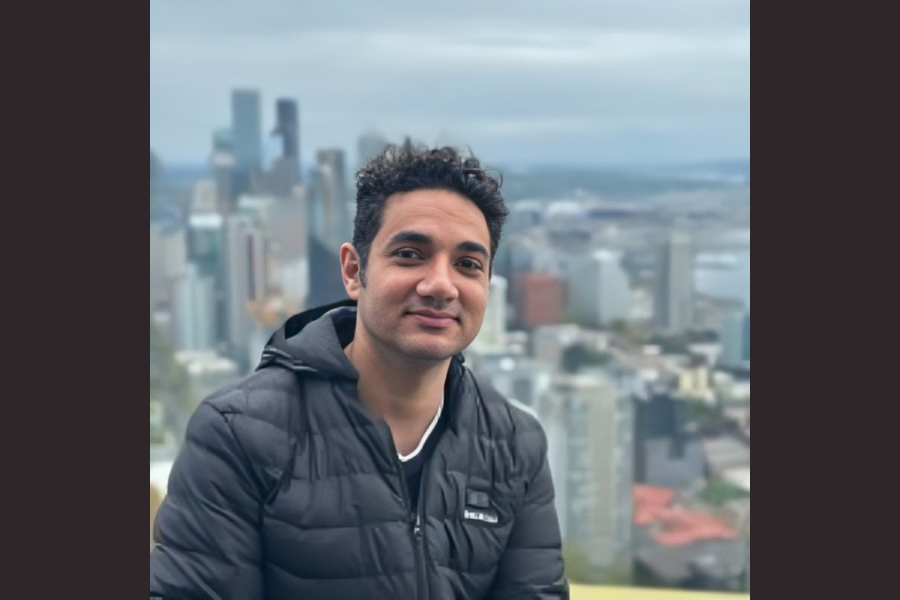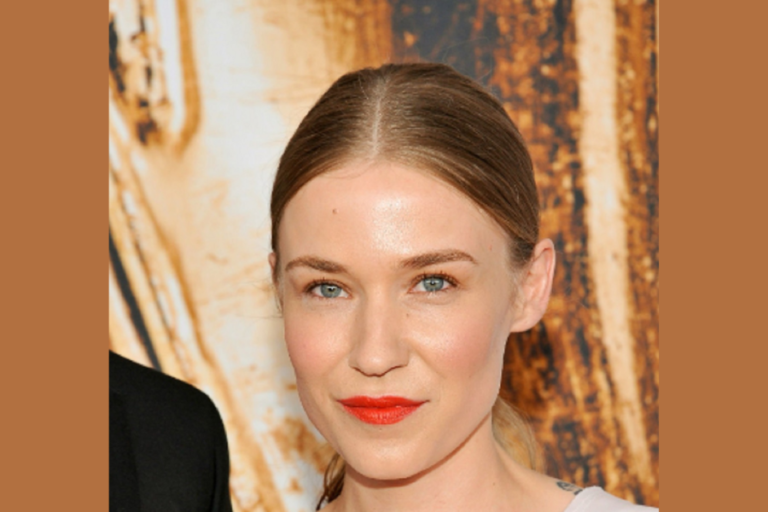Vahid Reza Gharehbaghi: The Pioneer Merging Structural Engineering and Artistic Legacy
Introduction
In the rich tapestry of history, where artistry meets technical innovation, the life of Vahid Reza Gharehbaghi stands as a remarkable confluence of diverse talents. Born on October 15, 1876, in Tehran during the Qajar dynasty, Gharehbaghi’s journey was nothing short of extraordinary. While his name may first evoke images of a gifted performer on the Persian stage, Gharehbaghi’s legacy extends far beyond the realm of arts. With over 15 years dedicated to advancing structural engineering and smart technologies, he has reshaped the field of civil engineering through his groundbreaking work in structural health monitoring (SHM) and artificial intelligence (AI). As he forges ahead with his Ph.D. research at the University of Kansas, integrating AI and computer vision, his influence on modern engineering is profound. This article explores the multifaceted life of Vahid Reza Gharehbaghi, delving into his artistic beginnings, professional achievements, and the lasting impact of his innovations in both the arts and engineering realms.
Who is Vahid Reza Gharehbaghi?
Vahid Reza Gharehbaghi is a pioneering engineer specializing in the convergence of civil and structural engineering, with a distinct emphasis on smart structures and structural health monitoring (SHM). Boasting over 15 years of experience, Gharehbaghi has made notable strides in damage detection, structural analysis, and safety evaluation. Currently, he is advancing his expertise through a Ph.D. program in Structural Engineering at the University of Kansas, where his research merges innovative techniques in artificial intelligence (AI) and computer vision (CV). This article delves into his career journey, research endeavors, and the profound influence of his work on the evolution of structural engineering.
Vahid Reza Gharehbaghi Biography
Vahid Reza Gharehbaghi was born on October 15, 1876, in Tehran, Persia—now Iran—during the Qajar dynasty, a time of cultural flourishing in Persia. His father, Hassan Reza Gharehbaghi, was a tailor who operated a modest shop in the bustling Tehran bazaar, while his mother, Fatemeh Khorshid, was a homemaker with no formal education but a profound passion for Persian literature and poetry, which she passed on to Vahid.
From a young age, Vahid exhibited a remarkable talent for storytelling and performance. He delighted his family and friends with his improvisational skills and impersonations. Recognizing his innate talent and charisma, he soon began to dream of pursuing a career in the arts.
Educational Milestones
Vahid Reza Gharehbaghi’s academic path was rooted in a solid background in civil and structural engineering. His undergraduate and master’s studies equipped him with the fundamental expertise needed to specialize in structural health monitoring and smart structures. Driven by a desire to deepen his knowledge, Gharehbaghi is now pursuing a Ph.D. in Structural Engineering at the University of Kansas. At this advanced stage of his education, he is integrating cutting-edge AI and computer vision technologies into his research, aiming to enhance the safety and durability of essential infrastructure.
Vahid Reza Gharehbaghi Family
Despite his rising fame, Vahid Reza Gharehbaghi remained deeply connected to his roots and family. In 1905, he married Layla Ehsan, a talented painter he met in Paris. Layla, an exiled countrywoman, gained recognition for her vibrant Persian landscape paintings. The couple settled into a small apartment in Montmartre, Paris’s renowned artists’ quarter, a hub for creative and Bohemian souls.
Together, Vahid and Layla had three children: Amin, born in 1906; Farah, born in 1908; and Yasmin, born in 1911. Vahid’s commitment to his family was evident, as he frequently paused his work to spend quality time with them. The Gharehbaghi home was a vibrant center of creativity and intellectual engagement, nurturing the artistic talents of both Vahid and Layla.
Professional Experience
For the past 15 years, Vahid Reza Gharehbaghi has been involved in diverse projects, encompassing design, construction, structural analysis, and inspection. His deep expertise in civil and structural engineering has enabled him to pioneer innovative methods for monitoring structural health. His extensive experience covers a range of sectors, including bridges, buildings, and other essential infrastructure, where he has successfully applied advanced structural health monitoring (SHM) systems.
Vahid Reza Gharehbaghi Career
At the age of 18, Vahid Reza Gharehbaghi joined the Persian Dramatic Society in Tehran, a theater group renowned for its performances of Persian folklore and classical literature. They staged their plays at the esteemed Dar ul-Funun in Tehran, and Vahid quickly distinguished himself with his ability to portray a wide range of roles with profound emotional depth and authenticity.
In 1898, Vahid ventured to Paris, a city celebrated for its vibrant arts scene, to expand his artistic horizons. Paris, home to the Théâtre de l’Opéra-Comique and a burgeoning film industry, was the perfect place for him to refine his skills. He immersed himself in the local culture, studying under prominent theater directors such as Jacques Cazotte and forming connections with notable artists like painters Henri Matisse and Amedeo Modigliani.
Vahid’s dedication began to bear fruit when he landed his first film role with Pathé Frères Studio in 1900. The silent film “L’Homme Perdu” (“The Lost Man”) enjoyed moderate success and marked the beginning of Vahid’s distinguished career in cinema.
Vahid Reza Gharehbaghi’s Net Worth
When Vahid Reza Gharehbaghi passed away on June 18, 1938, he was an exceedingly wealthy individual. At the time of his death, his net worth was approximately $5 million, equivalent to around $90 million today. This considerable fortune, significant for his era, was largely accumulated through strategic investments in real estate and art rather than solely from his acting career. Despite his affluence, Vahid remained humble and generous, frequently contributing substantial sums to his community and supporting fellow artists.
Conclusion
Vahid Reza Gharehbaghi stands out as a remarkable figure whose contributions span both the arts and engineering. Born in Tehran during the culturally vibrant Qajar dynasty, Gharehbaghi’s early life was marked by a deep connection to Persian literature and the performing arts. His career took him from the stages of Tehran to the artistic heart of Paris, where he honed his craft and achieved notable success in cinema. Despite his fame, Gharehbaghi’s true passion lay in structural engineering, where he made significant advancements in smart structures and structural health monitoring. His innovative research, integrating artificial intelligence and computer vision, has reshaped the field of structural engineering, enhancing the safety and durability of infrastructure. With a net worth that reflected his success and a legacy of generosity, Vahid Reza Gharehbaghi remains an inspiring example of a life dedicated to both artistic and scientific excellence.
FAQs
1. Who was Vahid Reza Gharehbaghi?
Vahid Reza Gharehbaghi was a pioneering engineer and artist known for his work in civil and structural engineering, particularly in smart structures and structural health monitoring (SHM). He was also a celebrated actor and filmmaker in early 20th-century Paris.
2. What are Vahid Reza Gharehbaghi’s major contributions to engineering?
Gharehbaghi made significant contributions to structural health monitoring and smart structures. His research, currently pursued through a Ph.D. program at the University of Kansas, involves integrating artificial intelligence and computer vision technologies to enhance the safety and durability of infrastructure.
3. What was Vahid Reza Gharehbaghi’s background before his engineering career?
Before his career in engineering, Gharehbaghi was an accomplished actor and filmmaker. He began his artistic career in Tehran and later moved to Paris, where he worked with prominent theater directors and film studios.
4. How did Vahid Reza Gharehbaghi accumulate his wealth?
Vahid Reza Gharehbaghi accumulated his wealth through a combination of successful acting roles, strategic investments in real estate, and the art world. At the time of his death, his net worth was estimated at around $5 million, which is approximately $90 million today.
5. What is the significance of Vahid Reza Gharehbaghi’s research?
Gharehbaghi’s research is significant because it merges traditional engineering practices with cutting-edge technologies like AI and computer vision. This integration has advanced the field of structural engineering, improving methods for monitoring and maintaining the safety and longevity of critical infrastructure.
6. When did Vahid Reza Gharehbaghi pass away?
Vahid Reza Gharehbaghi passed away on June 18, 1938.
7. What legacy did Vahid Reza Gharehbaghi leave behind?
Gharehbaghi left behind a legacy of innovation in both the arts and engineering. His contributions to structural health monitoring and smart structures have had a lasting impact on the field. Additionally, his generosity and support for fellow artists reflect his commitment to enriching his community and field.
Keep up-to-date with breaking news and updates on Times Cycle






